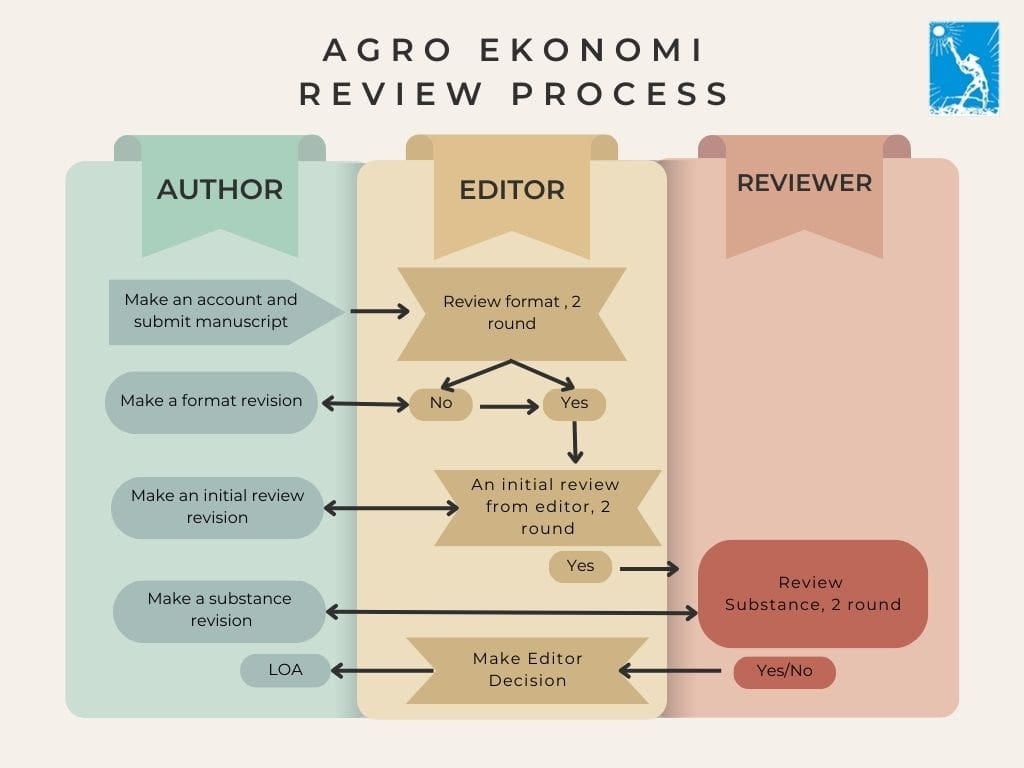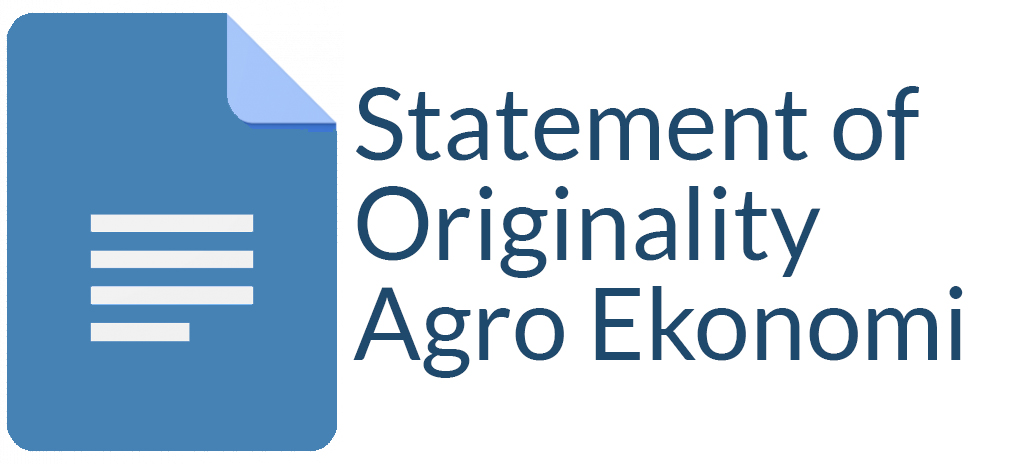Economic Impact of Sugarcane in Indonesia: An Input-Output Approach
Hani Perwitasari(1*), Jangkung Handoyo Mulyo(2), Sugiyarto Sugiyarto(3), Arif Wahyu Widada(4), Abi Pratiwa Siregar(5), Zaura Fadhliani(6)
(1) Department of Agricultural Socio-Economics, Faculty of Agriculture, Universitas Gadjah Mada, Yogyakarta
(2) Department of Agricultural Socio-Economics, Faculty of Agriculture, Universitas Gadjah Mada, Yogyakarta
(3) Department of Agricultural Socio-Economics, Faculty of Agriculture, Universitas Gadjah Mada, Yogyakarta
(4) Department of Agricultural Socio-Economics, Faculty of Agriculture, Universitas Gadjah Mada, Yogyakarta
(5) Department of Agricultural Socio-Economics, Faculty of Agriculture, Universitas Gadjah Mada, Yogyakarta
(6) Department of Agricultural Socio-Economics, Faculty of Agriculture, Universitas Gadjah Mada, Yogyakarta
(*) Corresponding Author
Abstract
Sugarcane revitalization is both a challenge and an opportunity in Indonesia. Demand for sugar tends to increase from year to year that fulfilled by domestic production and imports. Thus, it is necessary to increase domestic sugarcane competitiveness to balance national sugarcane production and consumption. This study’s objectives were (1) to determine the forward linkage and backward linkage of sugarcane in Indonesia, and (2) to know the output, income, and employment multiplier. The linkages and multipliers of sugarcane were calculated by the input-output analysis of 66 sectors from 1975 to 2005 by Statistics Indonesia (BPS). Estimation values for 2010, 2015, and 2020 are obtained from the linear forecasting method. T-test was used to compare linkages and multipliers between sugarcane and the average of all sectors in the economy. The results showed that the backward linkage, output, and employment multiplier of sugarcane were lower than the average of all sectors in the economy. Besides, the forward linkage of sugarcane was equal, and the income multiplier was higher than the average of all sectors in the economy.
Keywords
Full Text:
PDFReferences
Arifin, B. (2008). Ekonomi Swasembada Gula Indonesia. In Economic Review (Issue 211). https://www.researchgate.net/publication/240631517_EKONOMI_SWASEMBADA_GULA_INDONESIA/link/59562153aca272fbb37d14bc/download
FAO. (2020). Sugarcane Production and Sugar-Refined Import in Indonesia (1961-2018). http://www.fao.org/faostat/en/#data/TP
Guo, J., & Planting, M. a. (2000). Using Input-Output Analysis to Measure U.S. Economic Structural Change Over a 24 Year Period. In International Conference on Input-Output Techniques,.
Hadfina, N., Masyhuri, Hardyastuti, S., & Perwitasari, H. (2017). Competitiveness Analysis of Sugarcane Farming in Bantul. Proceeding of the 1st International Conference on Tropical Agriculture, 95–108. https://doi.org/https://doi.org/10.1007/978-3-319-60363-6_9
Isaskar, R., Sutrisno, S., & D, D. P. (2010). Studi Keunggulan Komparatif Usahatani Tebu. Agricultural Socio-Economics Journal, X(2), 129–138.
Kumar, R. (2015). An Analysis of Export Specialization and Competitiveness in the Indian Sugar Industry. Competition Forum, 13(1), 63.
Kurniawan, B. P. Y. (2016). Keunggulan Komparatif Dan Kompetitif Gula Tebu Besuki Raya: Sebuah Pengembangan Analisis Kebijakan. 104–108.
Latruffe, L. (2010). Competitiveness, Productivity and Efficiency in the Agricultural and Agri-Food Sectors. OECD Food, Agriculture and Fisheries Papers, 30(30), 1–63.
Import Duty Calculation, Pub. L. No. 160/PMK.04/2010 (2010). https://jdih.kemenkeu.go.id/fullText/2010/160~PMK.04~2010Per.HTM
Miernyk, W. H. (1966). The Elements of Input-Output Analysis. Economica, 33(132), 501. https://doi.org/10.2307/2552761
Miller, R. E., & Blair, P. D. (2009). Input-Output Analysis Foundations and Extensions Second Edition. Cambridge University Press.
Nazara, S. (2005). Analisis Input Output Edisi Kedua. Lembaga Penerbit Fakultas Ekonomi Universitas Indonesia.
Nuhfil Hanani, Ratya Anindita, Agnes Q. Pudjiastuti, D. K. (2013). Effects of Sugar Price Increase in Indonesia. Studia Universitatis Babes Bolyai - Oeconomica, 58, 28–39. https://www.ceeol.com/search/article-detail?id=227878
Perwitasari, H., & Sari, N. . (2013). Analisis Input-Output Komoditas Kelapa Sawit di Indonesia. Jurnal Lmu-IImu Pertanian, 9(1), 11–21.
Pudjiastuti, A. Q., & Kembauw, E. (2017). Sugar price policy and indonesia’s trade balance. Journal of Advanced Research in Law and Economics, 8(8), 2540–2548. https://doi.org/10.14505/jarle.v8.8(30).26
Rachmat, M. (2016). Kesempatan kerja dan prospek ketenagakerjaan dalam pengembangan tebu di Jawa. Forum Penelitian Agro Ekonomi, 9(2–1), 30. https://doi.org/10.21082/fae.v9n2-1.1992.30-39
Ross, S. (2017). Introductory Statistics 4th Edition. Elsevier Academic Press.
Sheetal, S., Rajiv, K., & Shashi, S. (2020). Export competitiveness and concentration analysis of major sugar economies with special reference to India. Journal of Agribusiness in Developing and Emerging Economies, 10(5), 687–715. https://doi.org/10.1108/JADEE-07-2019-0096
Sulaiman, A. A., Sulaeman, Y., Mustikasari, N., Nursyamsi, D., & Syakir, A. M. (2019). Increasing sugar production in Indonesia through land suitability analysis and sugar mill restructuring. Land, 8(4), 1–17. https://doi.org/10.3390/land8040061
Susila, W. R., & Sinaga, B. M. (2016). Analisis Kebijakan Industri Gula Indonesia. Jurnal Agro Ekonomi, 23(1), 30. https://doi.org/10.21082/jae.v23n1.2005.30-53
Susilowati, S. H., & Tinaprilla, N. (2020). Analisis Efisiensi Usaha Tani Tebu Di Jawa Timur. Jurnal Penelitian Tanaman Industri, 18(4), 162. https://doi.org/10.21082/jlittri.v18n4.2012.162-172
Takii, S., & Narjoko, D. (2012). FDI Forward Linkage Effect and Local Input Procurement- Evidence from Indonesian Manufacturing Sadayuki. ERIA Research Project, pp.111-146(3), 227–265.
Toharisman, A., & Triantarti. (2016). An Overview of Sugar Sector in Indonesia. Sugar Tech, 18(6), 636–641. https://doi.org/10.1007/s12355-016-0490-6
Article Metrics
Refbacks
- There are currently no refbacks.
Copyright (c) 2018 Agro Ekonomi

This work is licensed under a Creative Commons Attribution-ShareAlike 4.0 International License.
View My Stats











